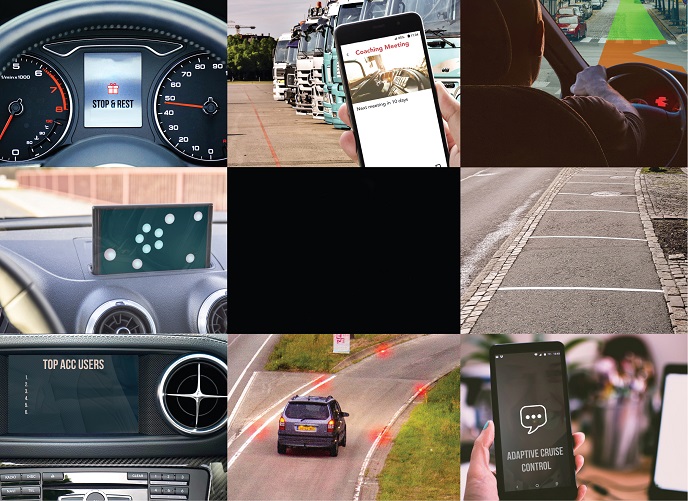Nudging and coaching measures boosting road safety
When it comes to road safety, current measures aim to reduce the impacts of accidents or help drivers steer away from dangerous situations by encouraging safer behaviour. Many of these appeal to conscious decision making. However, navigating through traffic often becomes a habitual task. Taking an alternative approach to current measures, the EU-funded MeBeSafe(opens in new window) project aimed to influence habitual traffic behaviour. Stefan Ladwig, project coordinator from the Institute for Automotive Engineering (ika) at RWTH Aachen University, explains: “To reduce risky situations and ‘almost-crashes’, we developed and tested solutions to nudge(opens in new window) drivers and cyclists towards safer behaviour in common traffic situations that carry an elevated risk, as well as new ways of coaching.”
Eight well-evaluated measures improving safety margins
Increasing drivers’ attention to oncoming potential hazards is MeBeSafe’s nudge to direct driver attention(opens in new window), led by the project partner TNO. “When a car approaches an intersection where, for example, cyclists are about to cross, an icon in the head-up display in the form of the intersection indicates via a notch the direction a cyclist is likely to approach. The colour of the icon will change from green to orange to red depending on the criticality of the situation,” highlights Ladwig. Focusing on speed, the project’s infrastructure driver nudge(opens in new window) slows down drivers in accident-prone locations. Light patterns on the roadsides are presented to drivers that are detected to be driving too fast. Anna-Lena Köhler from ika explains: “In a field test carried out in the project, this measure reduced the number of speeding vehicles by 40 %.” Furthermore, a team led by Chalmers/SAFER developed the cyclist nudge(opens in new window) that helps cyclists slow down. “Flat stripes running across the road become closer on the cyclist’s approach, giving them the perception that they are going faster, causing them to slow down,” notes Ladwig. Encouraging tired drivers to take a break is paramount. Based on an existing algorithm first developed by Volvo Cars, the driver alertness nudge(opens in new window) rewards drowsy drivers who pull over. “The field test showed that 87 % of drivers stopped within 20 minutes,” reports Ladwig. Safety systems like adaptive cruise control (ACC) can help prevent drivers from getting too close to other cars. A team led by Volvo cars, developed two designs aimed to nudge drivers into using ACC more. The project also developed a digital coaching app, that informs drivers about ACC and what it does. Another coaching measure is MeBeSafe’s DriveMate app(opens in new window), developed by a team led by Shell. It collects data such as acceleration and provides feedback and coaching material. It then suggests meeting up with a peer for coaching on suggested topics.
Towards zero fatalities
Ladwig concludes: “In 2030, it is most probable that the MeBeSafe measures will save 366 lives and eliminate 40 000 injuries. On a societal scale, this could lead to a saving of up to EUR 24.9 million by 2030." The project will continue to spread the word about the measures and its partners are looking into ways to continue the development process, to bring the developed measures to a higher technology readiness level. This includes additional testing activities and developing the technology further, bringing infrastructure measures to further locations, and working towards further fields of application for all measures.







